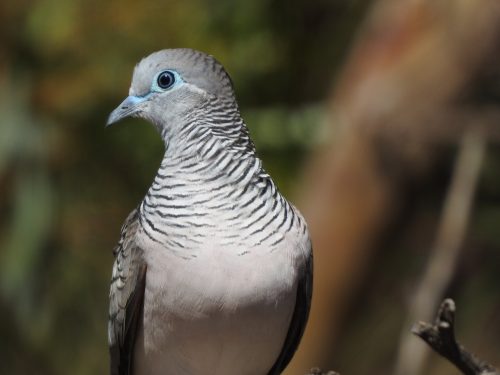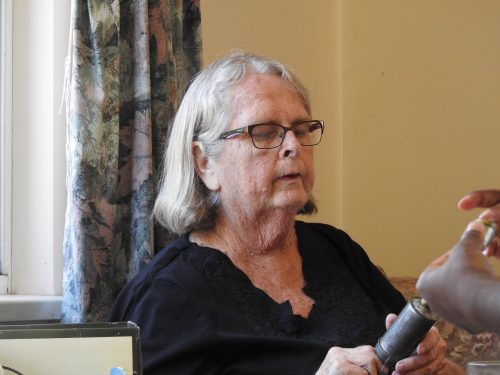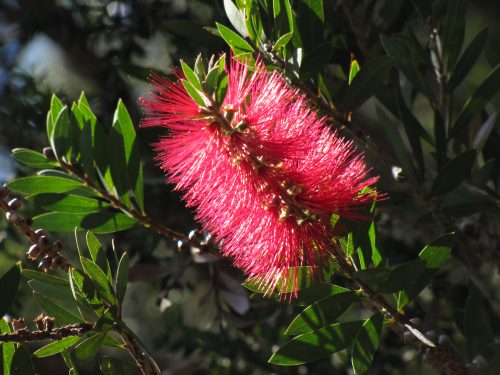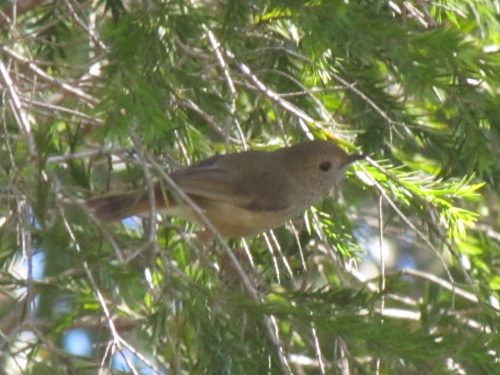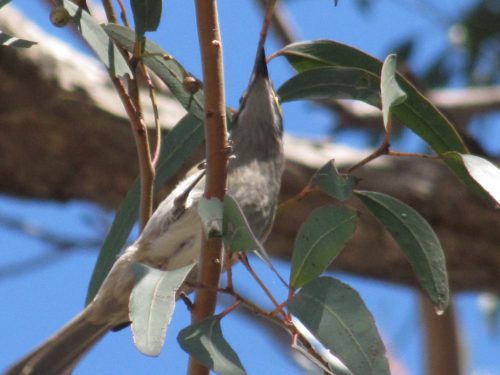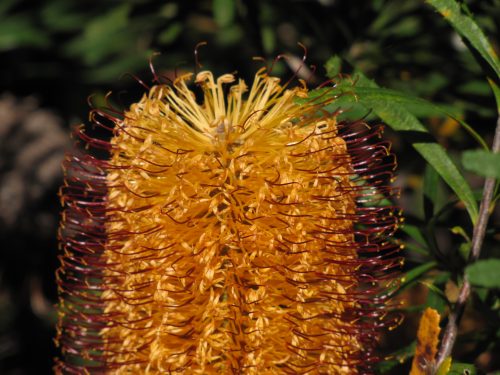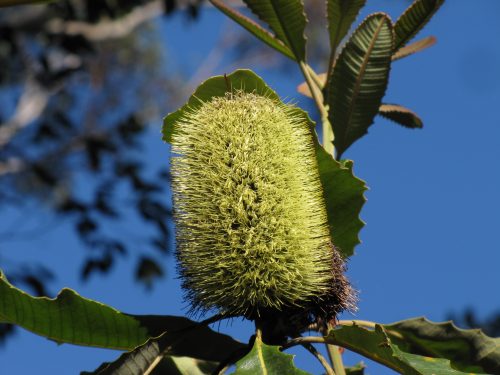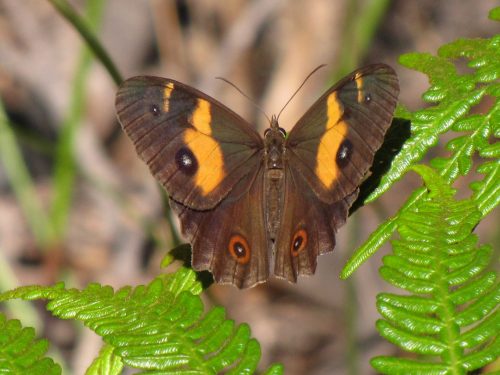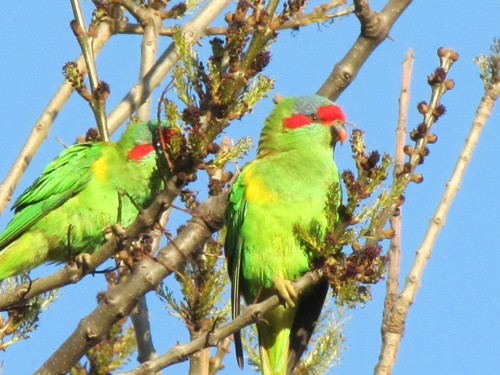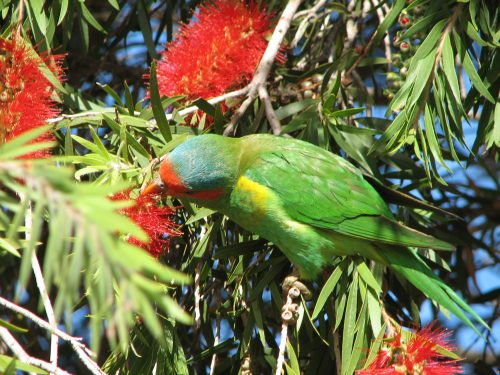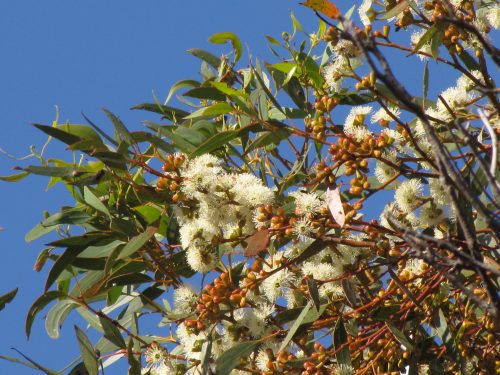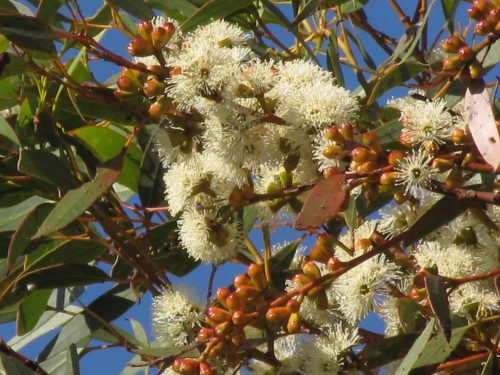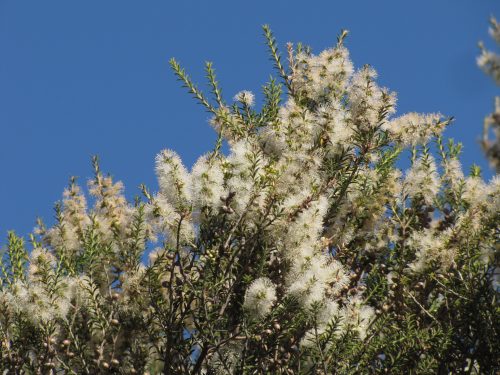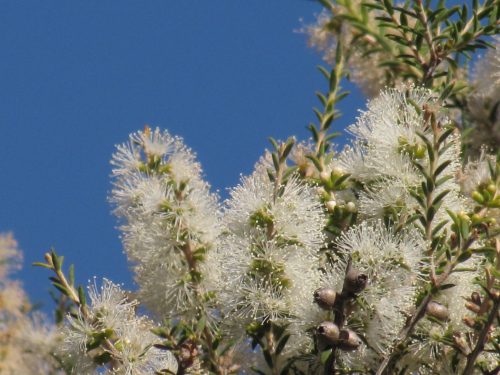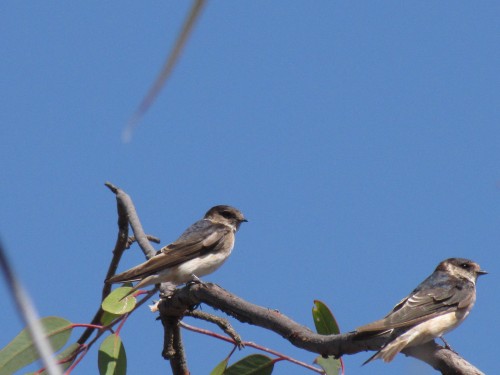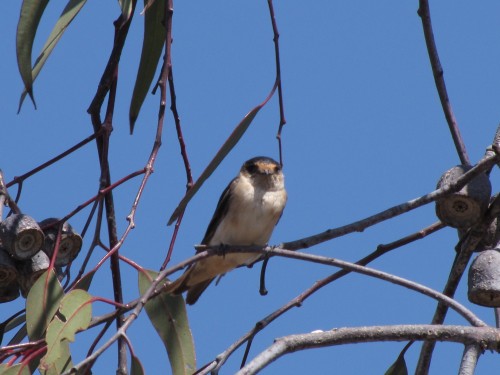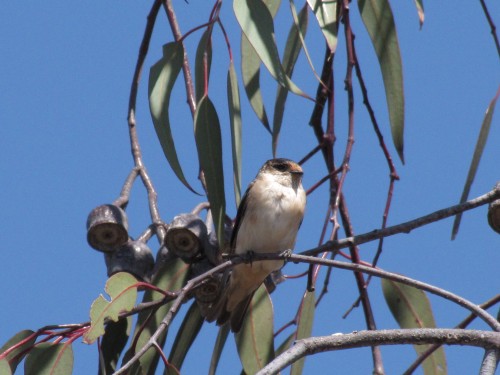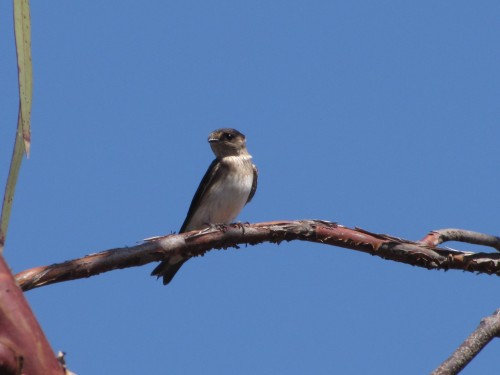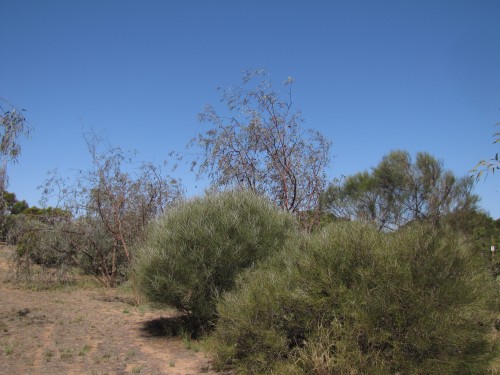Rainbow Lorikeet in the “Moonlight”
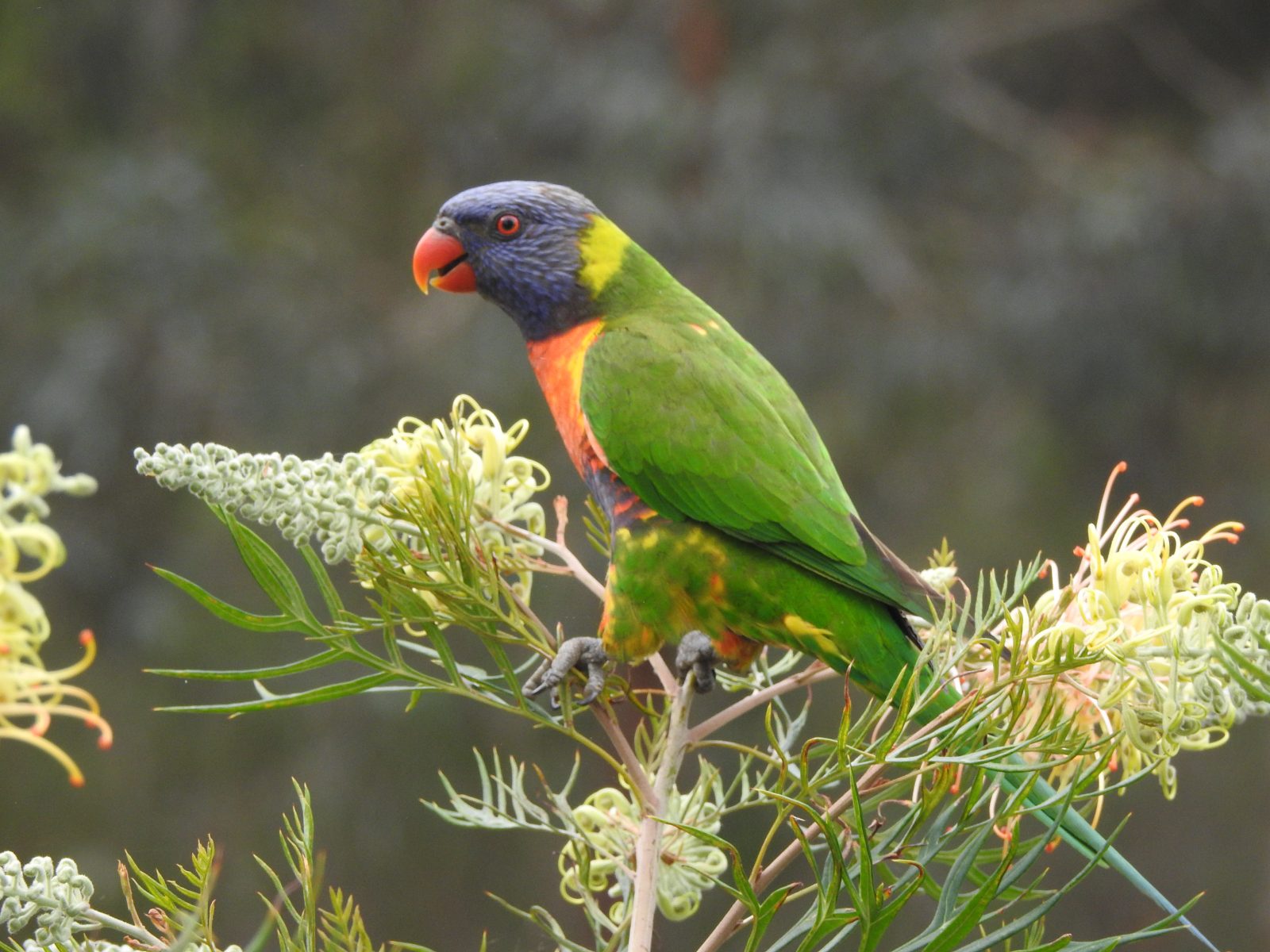
Last week I travelled from my home in Murray Bridge, South Australia, to Sydney to visit family for a few weeks. On the last day of my trip, I had a few spare hours, so I decided to visit the Australian Botanic Gardens at Mouth Annan. These magnificent gardens are in the south-west edge of the greater metropolitan Sydney area.
My wife and I had previously visited these gardens in December 2013 and we always wanted to make a return visit. Being the beginning of spring here in Australia it was an ideal time to visit. I mainly went to photograph the flowers, but it is also a great place to see and photograph some of our Australian native birds.
Just as I was about to leave, I passed a magnificent Grevillea “Moonlight” which is a cultivar, believed to be a hybrid of two other Grevillea species. This amazing plant was a significant tree some 5-6 metres tall and 6-7 metres wide. It was completely covered by brilliant white flowers. The local Rainbow Lorikeets were having a feast on the nectar.
The individual shown in today’s photographs was a very obliging bird, seemingly posing for my camera. In reality, however, it was either very hungry or totally hooked on the sweet nectar in the flowers. I was able to take a series of close up shots and it was totally oblivious of my presence. I love moments like this when I can take multiple photos of the same bird.
Below I have included a series of the best shots taken on my visit to the garden.
Further reading:
Australian Botanic Gardens Mount Annan
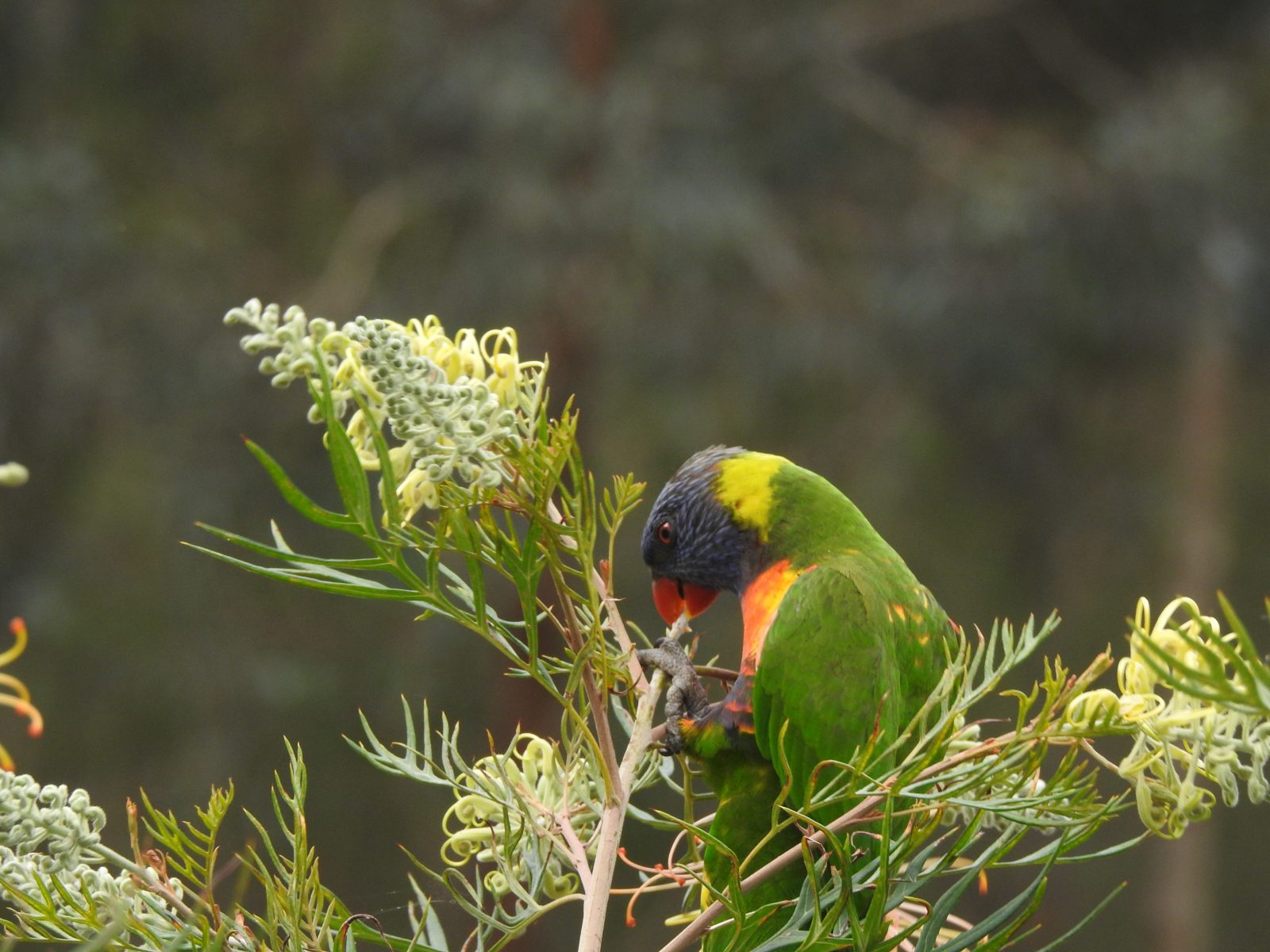
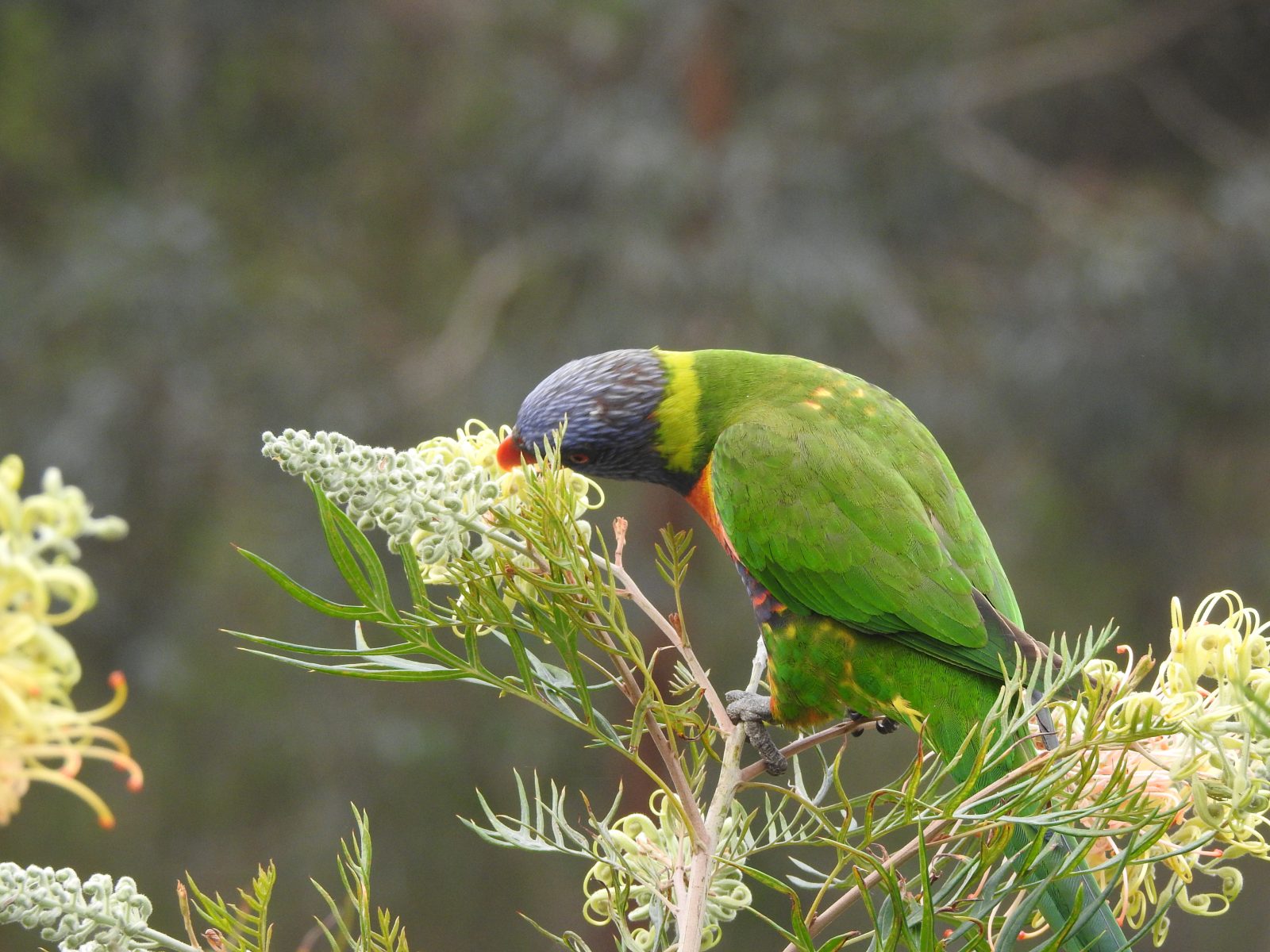
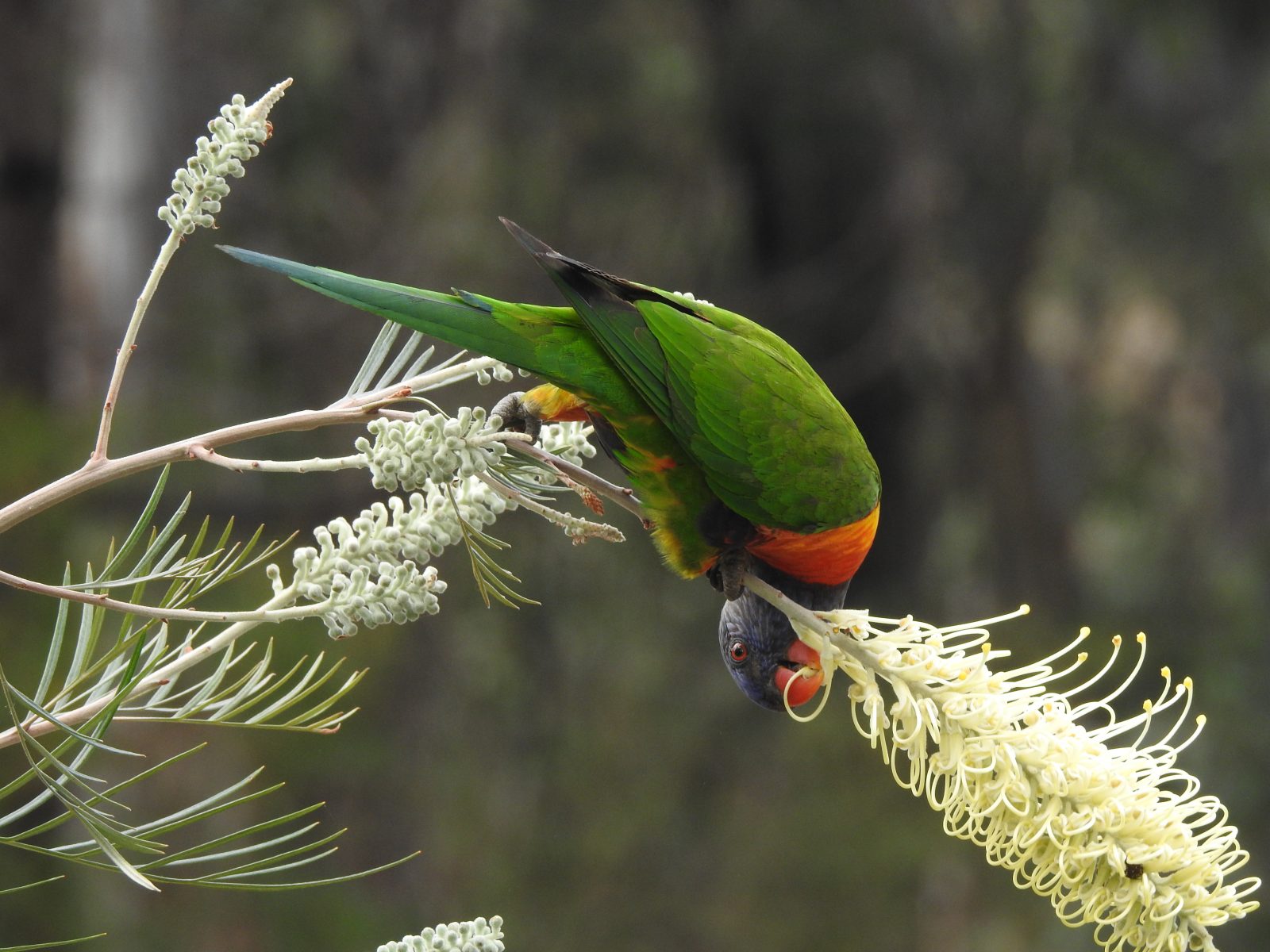
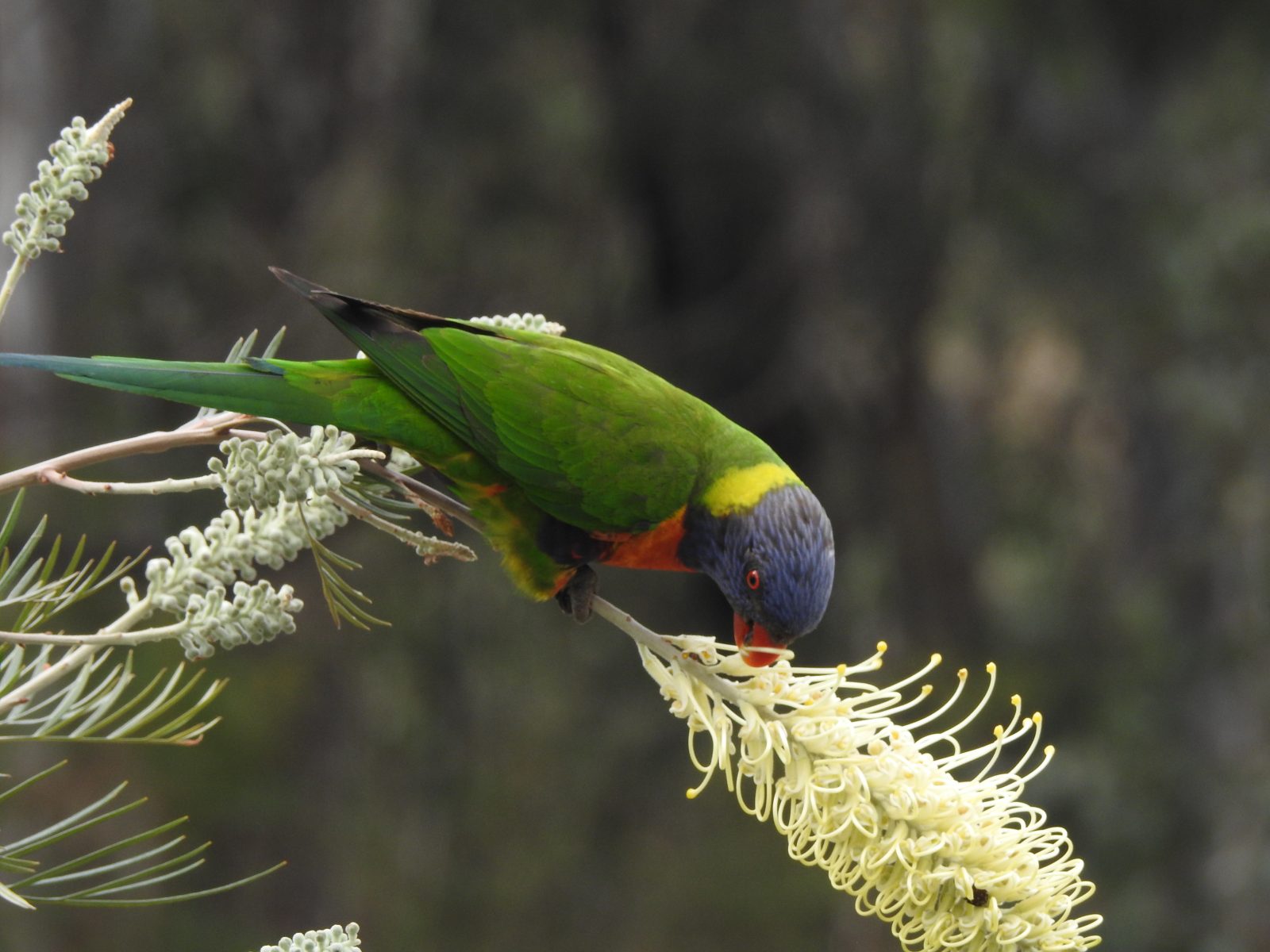
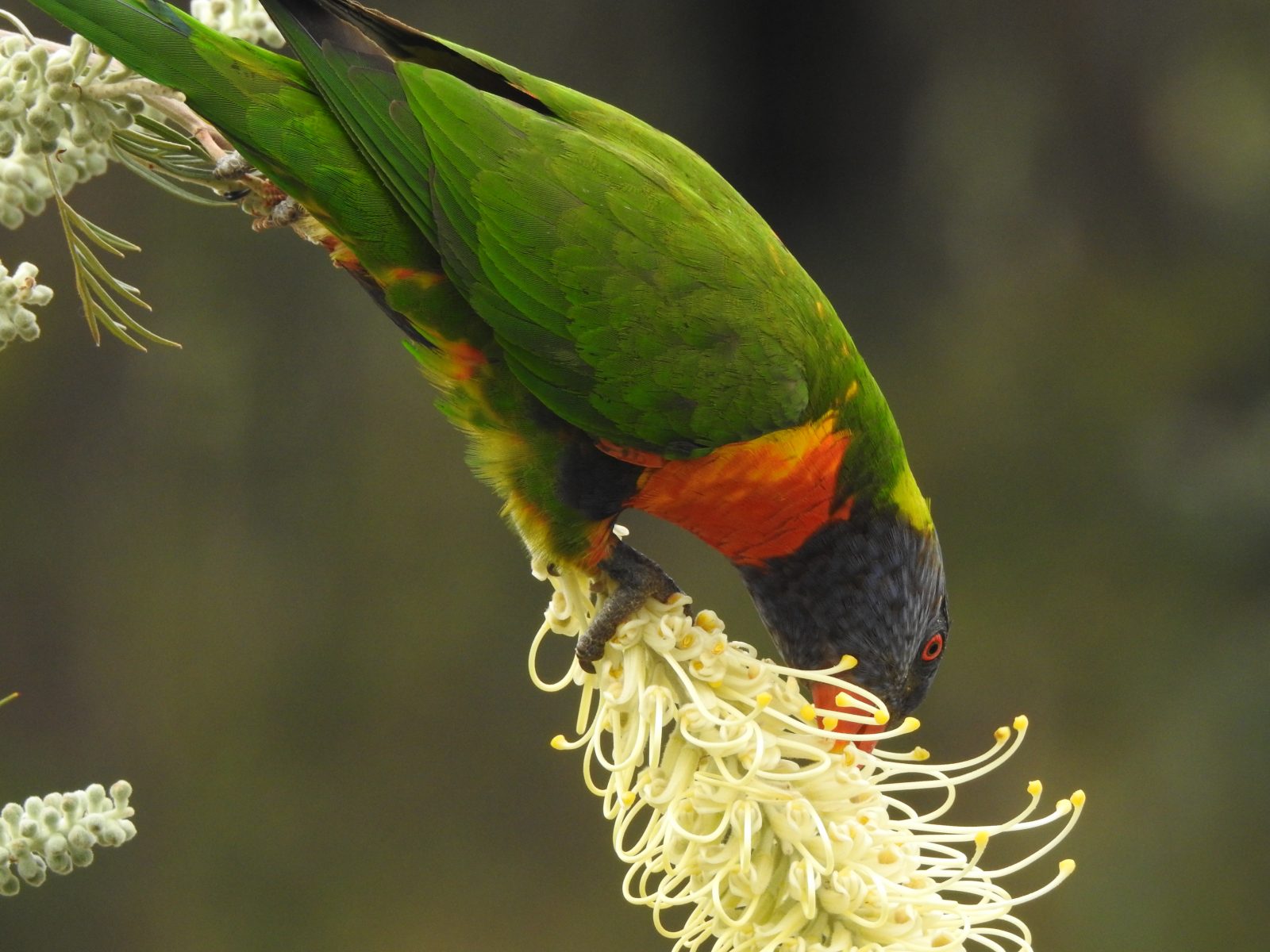
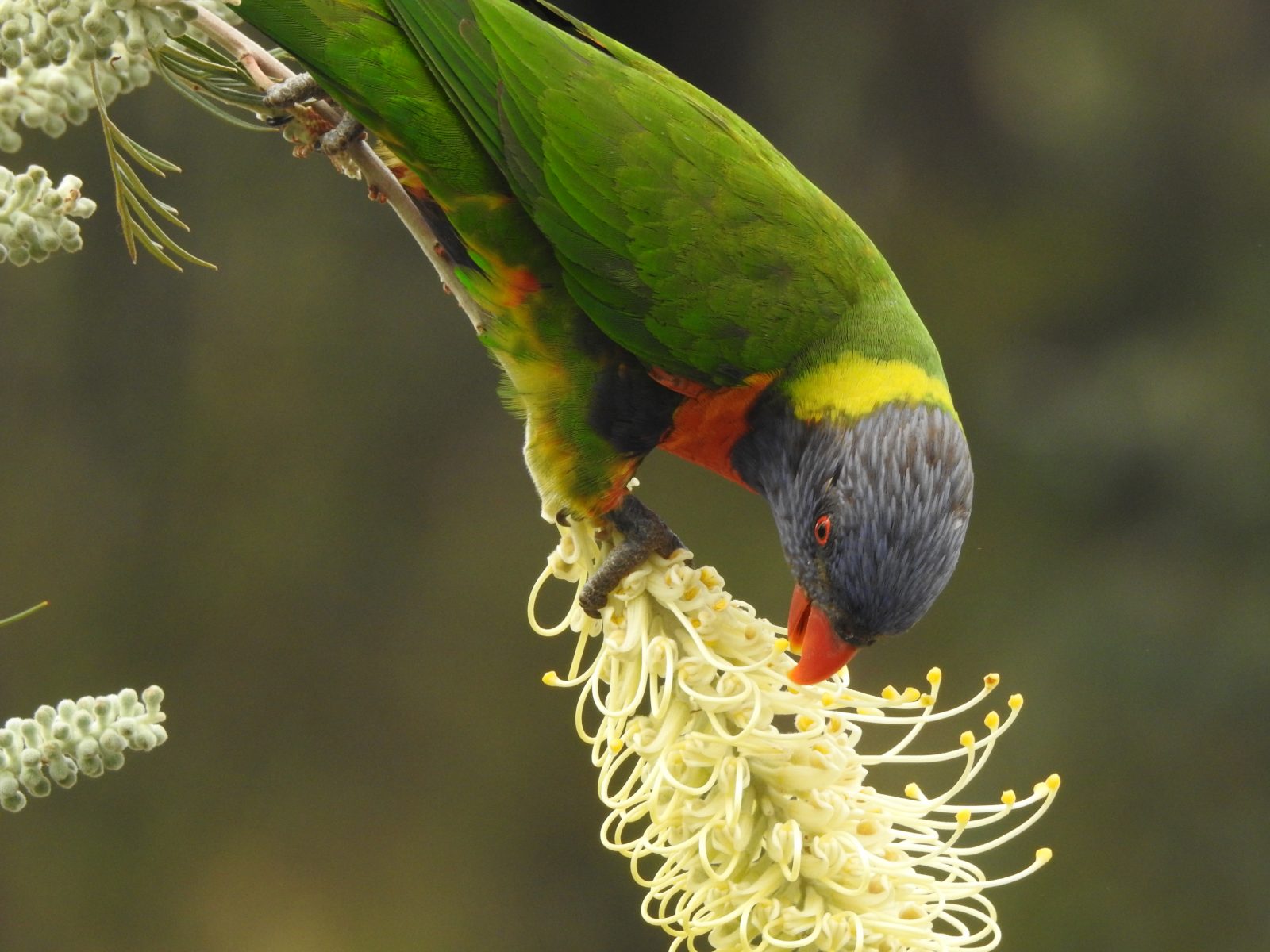
Vale, Corinne Hampel
It has been far too long since my last entry here.
Sorry about that.
Sometimes life gets in the way. Writing articles here became a very low priority. I hope that you haven’t missed me too much.
Vale, Corinne
In the latter half of 2017, I became the full-time carer for my wife, Corinne. She had experienced many bouts of illness in her life from when we were first married – some 47 years ago. Her health deteriorated rapidly in the last few months of last year and we had many trips to the local medical centre as well as many drives to Adelaide – some 80 kilometres (about 1 hour) away for treatment.
We were pleased to be able to celebrate Christmas as a family; our daughter who is currently teaching in Ethiopia flew home, and our son and family drove over from Sydney (about 15 hours drive). It was delightful to have the grandchildren here for this special occasion.
In the middle of January and after the second round of radiotherapy, my wife went downhill very rapidly. After a short stay in the local hospital, my wife passed peacefully and pain-free from this life on the 21st January 2018. She was surrounded by immediate family. Her funeral a week later was well attended by a wide range of people from many different aspects of Corinne’s life. It was a celebration of a life well lived with an impact on the lives of so many people.
I have written an obituary on her website, Mallee Native Plants Nursery here. She was a keen admirer and grower of Australian native plants. Her website contains a wealth of information on our plants and how to propagate them. I will maintain this site, for the time being, adding some new articles from time to time. Her nursery has now closed down and there are no plants for sale.
Her interest in our plants rubbed off on me and it complemented my interest in birds. Both of us loved sharing our flower photos and she grew to appreciate our beautiful bird life too. One of her favourite birds appears at the top of this post. She loved hearing the Peaceful Doves cooing in the trees near her plant nursery.
The photo below was taken at Christmas time in 2017. She was helping her two grandchildren to put the icing on the honey biscuits made especially for the occasion.
The future
I plan to get back into sharing photos of our birds here on this site over the coming weeks and months and – I hope – years. Last year I bought myself a new camera and this is proving to be more than I had hoped for – so expect many more photos of birds. I will also continue to write about my encounters with our feathered friends, too, so stay tuned. I am not yet ready to get back into travelling, but I definitely have plans to do so.
In the meantime – good birding.
Trevor.
Ku Ring Gai Wildflower Gardens
Whenever we visit our son and his family in Sydney, we try to spend at least a few hours in the Ku Ring Gai Wildflower Gardens. These gardens are about a half-hour drive from his home. The gardens feature a section which has been planted with Australian Native Plants, and the remainder of the gardens is natural scrubland.
There is an excellent new Visitor Centre, manned by helpful, friendly staff. Attached to the centre, there is a small nursery with Australian plants for sale. Groups may organise guided tours of the gardens and sections can be hired for functions, such as children’s birthday parties. To hire the facilities, contact the Ku Ring Gai Council. There are also many walking and cycling tracks throughout the gardens, many of them wheelchair friendly.
On our most recent visit, we had morning tea in one of the picnic areas before going on one of the walks. Later we explored another part of the gardens before moving to a third area for lunch. In all of this time, I had my binoculars and camera at the ready. These gardens can be frustrating at times. On occasions, the garden is filled with birdsong and I have found it hard to keep up with making a list of species seen or heard.
This time, however, although I could hear a few birds, many of them remained frustratingly out of view of my binoculars, as well as hard to find with my camera. Small birds, feeding the upper canopy of tall trees and bushes, make it very hard to get any good shots at all. Although I managed a few photos, I am not happy with any of them. I will just have to go back on our next visit to Sydney.
One of the birds I was able to photograph was the one above. It is a very poor shot and I think that it is a Striated Thornbill, a common species in these gardens. I hope that I can get a better shot on my next visit. In order to get one, the birds will have to sit still a lot longer than they do now. Perhaps someone could train a few for me.
Just after taken the photo of the thornbill, I saw what I think is a Yellow-faced Honeyeater feeding in the tree high above me (see photo above). I was looking almost directly straight up, and the bird stayed high in the foliage. I can just make out the yellow patch on the face next to the eyes.
While I had a frustrating time photographing the birds, some of the flowers were far more cooperative. While there was not all that much flowering, I still managed a few good shots (see above and below).
As a bonus, I managed a nice shot of a Varied Sword-grass Brown butterfly.
Go to the bottom of this post to see links to other posts about these gardens.
Further reading:
Lots and lots of Lorikeets
An influx of Lorikeets
Over recent days we have had an influx of lorikeets in our garden, on our property and along the road leading to our place here on the edge of Murray Bridge in South Australia.
Normally, we have the odd flyover of a small group of Purple-crowned Lorikeets. Occasionally they will land in one of our mallee trees for a short feed, depending on the extent of flowering at the time. They rarely stay for more than a few minutes.
From time to time we also have Rainbow Lorikeets shooting across the tops of the trees at speed. They are often gone in a flash, flying like colourful arrows against a blue sky. They, too, rarely come to settle in our trees.
The current influx of Musk Lorikeets is somewhat unusual. It is the first time in over 12 years that I have recorded it here in our garden. (My database records only go back that far; I am progressively working back through them.) Although it is relatively common in this area, I haven’t recorded it in our garden in all those years. In fact, if my memory is correct, I have recorded this species in our garden on only a handful of previous occasions, all of them more than 12 years ago.
Why the influx of Musk Lorikeets?
This leads me to contemplate the question: “Why now?”
The reasons are clear and far from complex. The last six to eight months have been exceptional from a weather point of view. From late mid-winter last July (2016) we have had well above average rainfall. This extra rain has produced one of the best flowering seasons for many years over the recent summer months (December – February). The eucalyptus mallee trees have flowered prolifically, along with many other local species of shrubs and bushes. Being predominantly nectar eating birds, Musk Lorikeets have flocked to this area. I don’t mind; I love having them around.
While I was watching them feeding in a mallee tree near to our house earlier this week, something spooked them. They flew off over our orchard, wheeled around to the north, then east and like green coloured screeching darts came hurtling back to the tree near me and recommenced feeding. As they flew, I estimated that there were some 40 to 50 birds, far more than one usually sees in a flock here. Having said that, I have seen large flocks flying together while visiting my daughter in Clare in the mid-north of South Australia.
More photos
I have included below, several photos of some of the trees and bushes currently flowering in our garden. These are what the lorikeets have been feeding on.
Further reading:
- Mallee trees
- Purple-crowned Lorikeets
- Purple-crowned Lorikeets at Brown’s Road Monarto
- Rainbow Lorikeets
- Feeding time at the Zoo
- Close views of Musk Lorikeets
Tree Martins all a twitter
A few weeks ago we had a day out with friends of ours. It was my wife’s birthday and after a wonderful lunch in one of the local hotels, we drove from Murray Bridge down south to Wellington. We had a twenty-minute wait to cross the River Murray on the local ferry; for some reason, we struck a very busy time. Driving off the ferry and heading east towards Tailem Bend for about a kilometre we turned off to the left. Several hundred metres on we came to the Pangarinda Botanic Gardens, one of our favourite places to visit near where we live.
These gardens, formerly known as an arboretum, are extensive plantings over 12 hectares of Australian native plants. This is always of particular interest to my wife – you can visit her site Mallee Native Plant Nursery here. While our visit coincided with the latter part of a very hot and dry summer, there was still a good variety of plants flowering. Late winter and early spring are certainly the best times to visit.
I have also found that wherever one finds extensive stands of Australian plants, there is also a good chance of a pleasing variety of birds. We found a newly installed picnic table to enjoy an afternoon cuppa and some birthday cake. While we sat there enjoying the bright, sunny day and gentle breeze, I was able to make a good list of birds seen and heard.
One of the bird species I quickly saw was the Tree Martin. A loose flock of about 50 or 60 martins were swooping and soaring overhead and over one particular group of eucalyptus trees about 50 metres away. After enjoying our cuppa my friend Keith and I wandered over to get a closer look. We could see that many of the martins were perching on several trees. Now I immediately thought that this was a good opportunity to get some close-up photos of this species. Usually, I only get to see this species on the wing, usually high overhead, not a good way of getting photos of this small species. They also fly very quickly.
I was able to approach to within about 10 metres of the tree and I managed to take a series of lovely photos as shown in today’s post (see above and below). While I have seen individuals and even a small group landing near to each other in a tree or on electricity wires, this is the first time I have seen such large numbers all settling near to one another. I am not sure why they were doing this. Then after a minute or so they would all take off again for a minute or two, before settling in the trees again. Perhaps they were just letting their food settle; there were plenty of insects on the wing that day so it was a feast for them, I guess.
Further reading:
